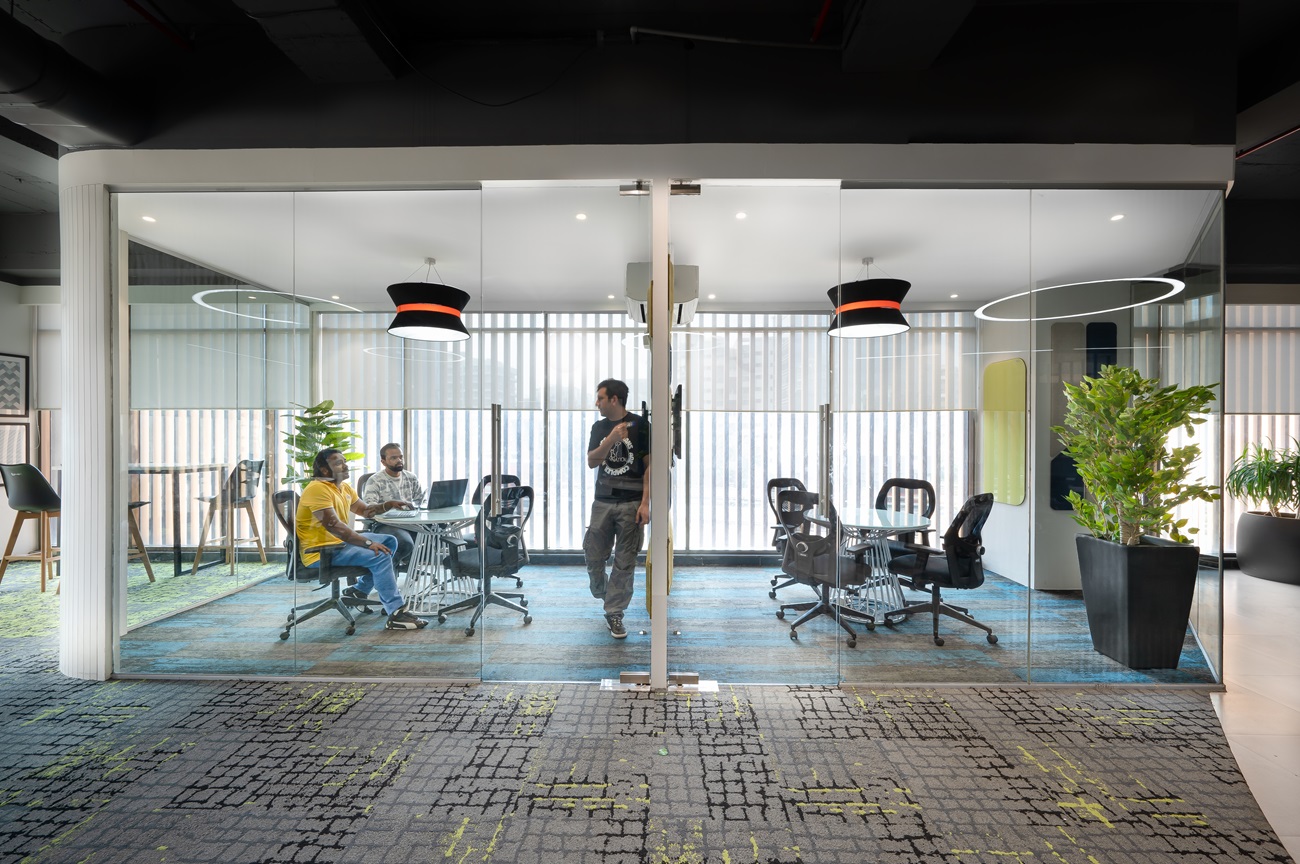The traditional office layout with rows of cubicles and private offices has been the norm for decades. However, as the modern workforce evolves, embracing collaboration, flexibility, and employee well-being, it’s time to rethink these outdated designs. Offices should be designed to foster creativity, productivity, and a sense of community, aligning with the changing needs of today’s workers.
The Benefits of Open and Flexible Workspaces
- Increased Collaboration: Open layouts encourage spontaneous interactions, knowledge-sharing, and cross-functional collaboration, leading to improved teamwork and idea generation.
- Enhanced Communication: With fewer physical barriers, open workspaces promote transparent and efficient communication among employees, fostering a sense of community and belonging.
- Flexibility and Adaptability: Modern workspaces incorporate flexible seating arrangements, movable furniture, and multipurpose spaces, allowing organizations to quickly adapt to changing project requirements and team dynamics.
- Improved Productivity: Well-designed open spaces with ample natural light, biophilic elements, and ergonomic furniture have been shown to boost employee productivity, creativity, and overall job satisfaction.
Striking the Right Balance: Incorporating Privacy and Focus Areas
While open layouts offer numerous advantages, they also present challenges in terms of distractions and lack of privacy. A well-designed modern workspace should strike a balance by incorporating:
- Quiet Zones: Dedicated areas for focused work, private calls, or meetings, equipped with sound-absorbing materials and noise-canceling technologies.
- Huddle Rooms: Small, enclosed spaces for team discussions, brainstorming sessions, or video conferences, fostering focused collaboration without disturbing the larger workspace.
- Privacy Pods: Individual, semi-enclosed workstations or pods for tasks requiring extended periods of concentration or confidentiality.
Embracing Sustainable and Biophilic Design Elements
In addition to functional considerations, modern workspace designs should prioritize sustainability and biophilic elements with the best office space interior designers, which have been proven to enhance employee well-being, productivity, and overall job satisfaction:
- Sustainable Materials: Incorporating eco-friendly materials, such as reclaimed wood, recycled plastics, and energy-efficient lighting systems, can significantly reduce the environmental impact of office spaces.
- Biophilic Design: Integrating natural elements like living walls, indoor gardens, and ample natural light can create a calming and rejuvenating atmosphere, reducing stress and promoting overall health.
Fostering a Sense of Community and Culture
Beyond functional and aesthetic considerations, modern office designs should reflect and reinforce an organization’s unique culture and values:
- Branded Spaces: Strategic use of company branding, color schemes, and design elements can foster a strong sense of identity and belonging among employees.
- Collaborative Hubs: Designated areas for social interactions, game rooms, or cafeterias can promote team bonding, creativity, and a positive work-life balance.
- Wellness Facilities: On-site fitness centers, meditation rooms, or outdoor spaces can encourage employees to prioritize their physical and mental well-being, contributing to a healthier and more engaged workforce.
Embracing Agile Methodologies and Activity-Based Working
To cater to the evolving demands of modern workforces, innovative office designs should incorporate principles of agile methodologies and activity-based working:
- Agile Workspaces: Inspired by the agile software development approach, these spaces feature movable whiteboards, reconfigurable furniture, and dedicated project rooms, enabling teams to work in sprints and adapt to changing project requirements.
- Activity-Based Working: Rather than assigning dedicated desks, this concept encourages employees to choose workspaces based on their current activities, promoting mobility, collaboration, and efficient use of space.
Fostering Diversity, Inclusion, and Accessibility
Inclusive and accessible workspace designs not only promote a sense of belonging but also tap into the diverse talents and perspectives of a diverse workforce:
- Accessible Facilities: Ensuring that the office layout, furniture, and amenities are compliant with accessibility standards, enabling individuals with disabilities to work comfortably and independently.
- Gender-Neutral Spaces: Providing gender-neutral restrooms, nursing rooms, and wellness facilities can create an inclusive environment that respects and accommodates the needs of all employees.
- Cultural Diversity: Incorporating design elements that celebrate and embrace cultural diversity can foster a sense of belonging and appreciation for different backgrounds and perspectives.
Embracing Flexibility and Future-Proofing
As workforces and business needs continue to evolve, modern office designs should prioritize flexibility and adaptability to accommodate future changes:
- Modular and Reconfigurable Spaces: Utilizing modular wall systems, movable partitions, and reconfigurable furniture allows workspaces to be easily transformed to meet changing requirements.
- Scalable Infrastructure: Incorporating scalable technology infrastructures, such as expandable Wi-Fi networks and adaptable power and data distribution systems, enables seamless growth and expansion.
- Multipurpose Spaces: Design versatile spaces that can serve multiple purposes, such as training rooms that double as event spaces or cafeterias that can host town hall meetings, maximize space utilization, and future-proof the office environment.
By embracing these innovative design principles with the leading office interior design company, organizations can create modern workspaces that foster collaboration, productivity, and employee well-being while also promoting sustainability, inclusivity, and adaptability to future changes.
The Bottom Line
Studio AsA, a leading interior design firm, specializes in creating innovative and functional workspaces that cater to the unique needs of modern businesses. With expertise spanning commercial spaces, hotels, restaurants, office spaces, and co-working environments, Studio AsA combines cutting-edge design principles with sustainable practices to craft inspiring and productive environments.
Whether you’re a startup seeking dynamic office space or an established corporation looking to revitalize your workspace, Studio AsA’s team of the best office interior designers is committed to delivering tailored solutions that exceed your expectations.


YOUR COMMENT